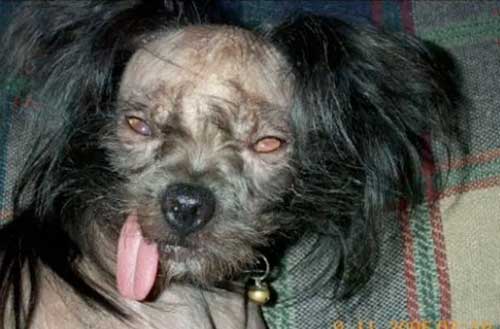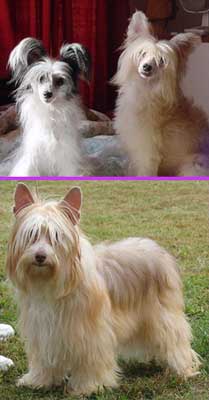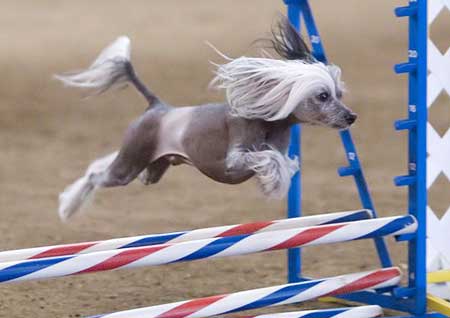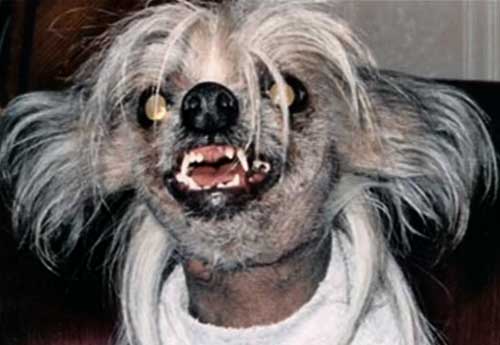
If ugly is regarded a handicap, the above two dogs are winners. I don't know the name of the topmost doggy, so I'm naming her Carol Channing, for whom she's a dead ringer.
The ugly-ass Chinese Crested/Japanese Chin mix below is named Gallagher (after the watermelon smashing comic), at age two though looking a hundred and three. He's usually called by his nickname, Booger. He has the typical jaw deformity of badly bred cresteds and subsequently lost several teeth, hence the lolling tongue.
Of Booger it has been bragged: "He's not only ugly, he stinks! He never figured out how to urinate without peeing on his own front legs! He's definitely the ugliest dog we know, but we think he's adorable."
 And since some pages back I promised to provide proof that the Chinese Crested is not inherently an horridly deformed toothless monstrosities, I've appended below a truly handsome crested in an agility contest. It gives a better feeling for why people possessing normal aesthetic values might have preserved the breed. And since some pages back I promised to provide proof that the Chinese Crested is not inherently an horridly deformed toothless monstrosities, I've appended below a truly handsome crested in an agility contest. It gives a better feeling for why people possessing normal aesthetic values might have preserved the breed.
Though sometimes offered as "Chinese Crested Chihuahua," the crested is not a type of chihuahua, though crossbred examples are a commonplace, and the breeds largely unknown origin is probably in crosses of the Mexican hairless with the chihuahua.
Chinese Cresteds don't come from China, either. Nor is there any to the common assertion that it was bred from Canis africanus The breed was developed between the 1920s and 1950s, predominantly by Debora Wood's Crest Haven Kennel of Florida.
It began to gain official recognition as a distinct breed in the 1980s. The goal was to duplicate a Chinese dog of the Han Dynasty which were whippet-like temple and palace guardians of extreme grace.
The genetic trait that causes many in the lineage to have hair only on top of head, feet, and tail, is not universal to the breed. Fully furred cresteds are called "powderpuffs." A fully furred Powderpuff Crested looks rather like a terrier if the "beard" is not shaved, but it is traditional to shave their muzzles so that they look rather like papillons. The in-text illustratioin shows Powderpuffs with and without beard.
The bald gene as distributed world-wide is always the same gene, so that hairless breeds from Malayasia, Middle East, Turkey, Sri Llanka, as well as Mexico are all thought to be interrelated.



|

